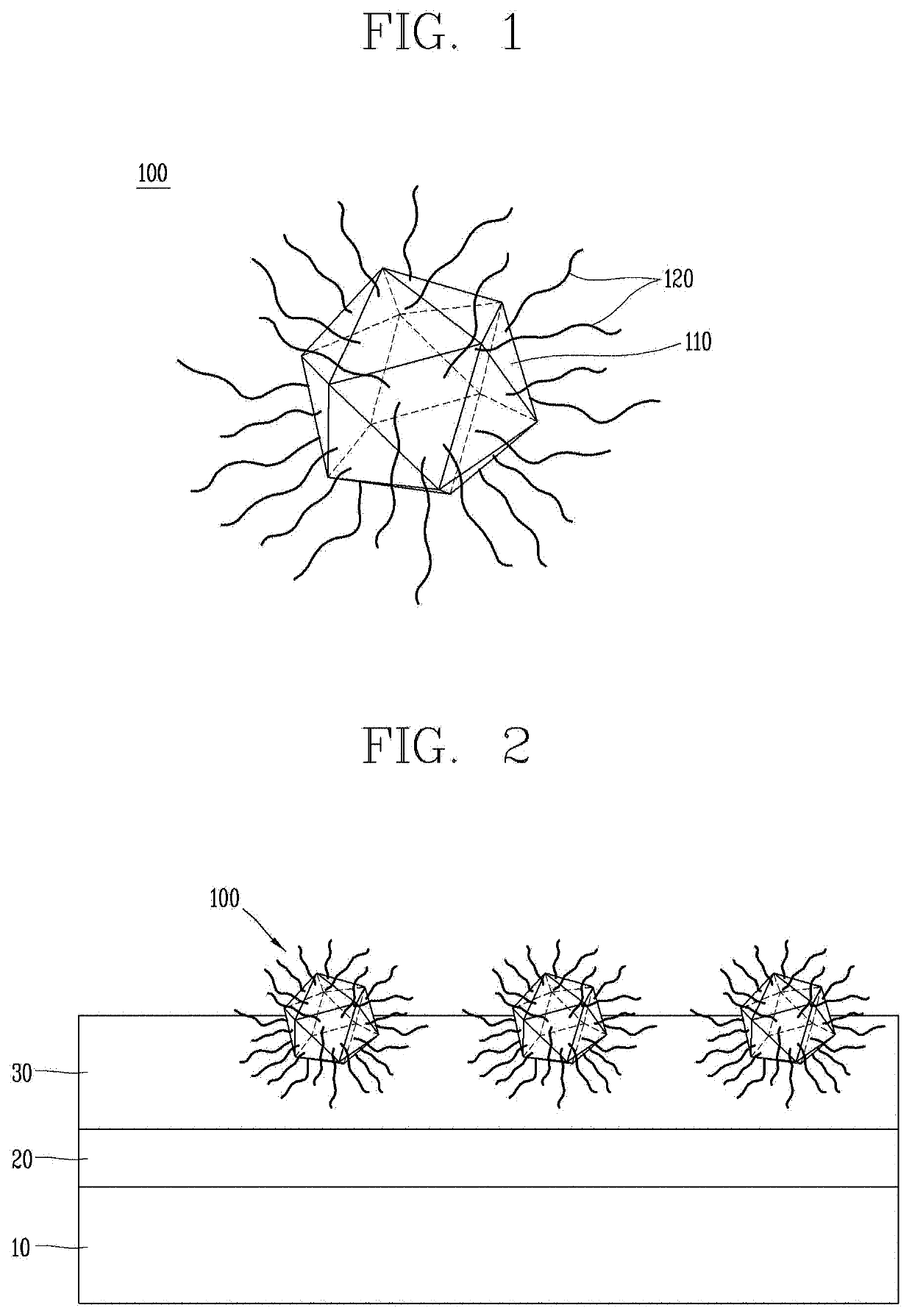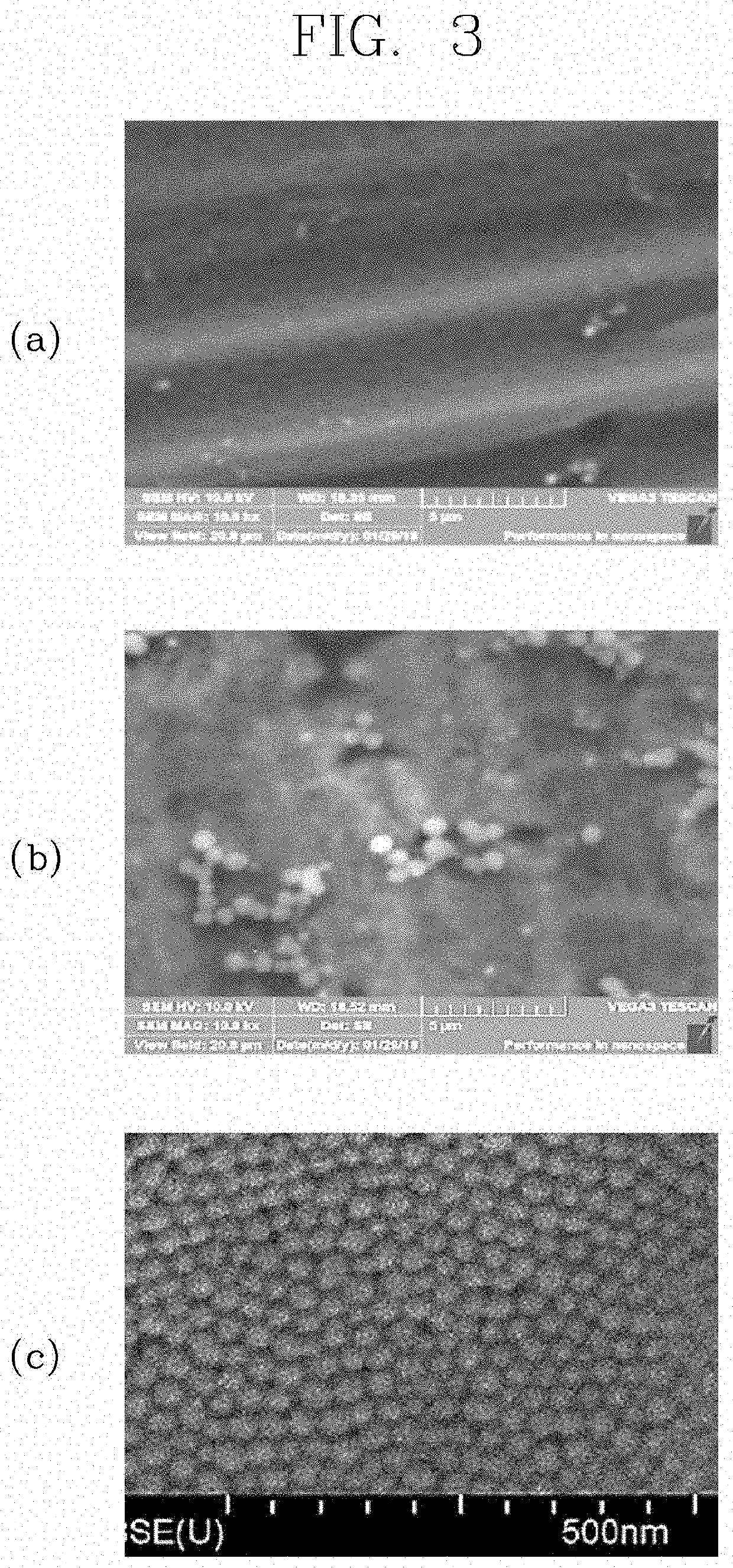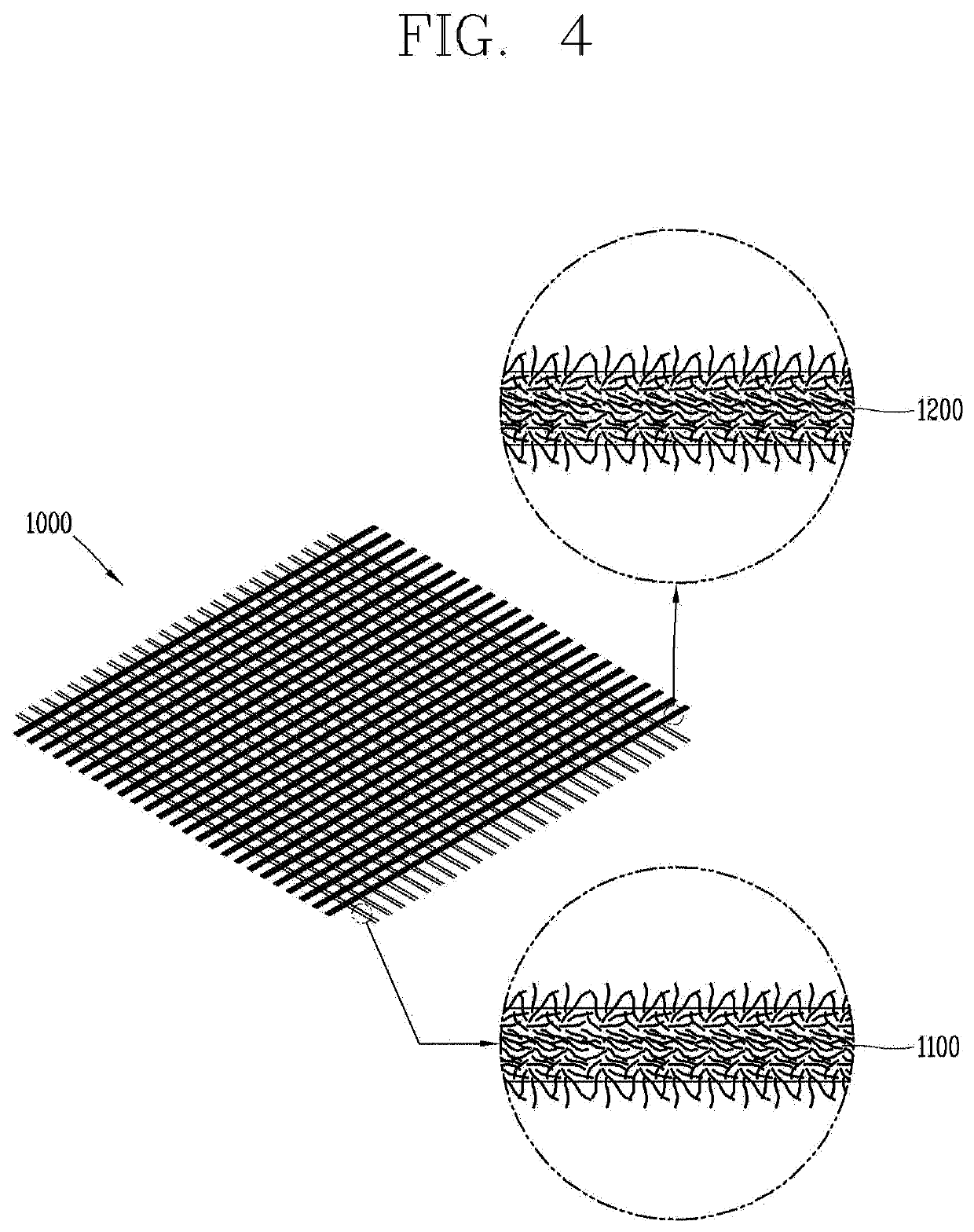Transition metal organic framework having antibacterial properties
- Summary
- Abstract
- Description
- Claims
- Application Information
AI Technical Summary
Benefits of technology
Problems solved by technology
Method used
Image
Examples
example 1
Preparation of Transition Metal Organic Framework
[0085]The transition metal organic framework may be prepared by the foregoing description. In detail, the transition metal organic frameworks may be prepared by dissolving α-MoO3 in an aqueous solution of pH 14, and gradually adding 70 wt % of a nitric acid solution containing 20 wt % of terephthalic acid having a carboxyl group (—COOH), and precipitating into the form of particles.
example2
Preparation of Transition Metal Organic Framework
[0086]The transition metal organic frameworks in which ZnMoO4 is a metal oxide may be prepared by adding and stirring ZnMoO4 powder at a concentration of 10 wt % into an aqueous solution containing 2 wt % of acrylic water-soluble polymer (Synthro W578), stirring the mixture to completely dissolve the powder, mixing ligands, and drying the resultant.
[0087]It is apparent to those skilled in the art that the transition metal organic frameworks described above are not limited to the configuration of the above-described embodiments, but may be embodied in other specific forms without departing from the essential features of the present disclosure.
PUM
| Property | Measurement | Unit |
|---|---|---|
| Size | aaaaa | aaaaa |
| Size | aaaaa | aaaaa |
| Nanoscale particle size | aaaaa | aaaaa |
Abstract
Description
Claims
Application Information
 Login to View More
Login to View More - R&D
- Intellectual Property
- Life Sciences
- Materials
- Tech Scout
- Unparalleled Data Quality
- Higher Quality Content
- 60% Fewer Hallucinations
Browse by: Latest US Patents, China's latest patents, Technical Efficacy Thesaurus, Application Domain, Technology Topic, Popular Technical Reports.
© 2025 PatSnap. All rights reserved.Legal|Privacy policy|Modern Slavery Act Transparency Statement|Sitemap|About US| Contact US: help@patsnap.com



